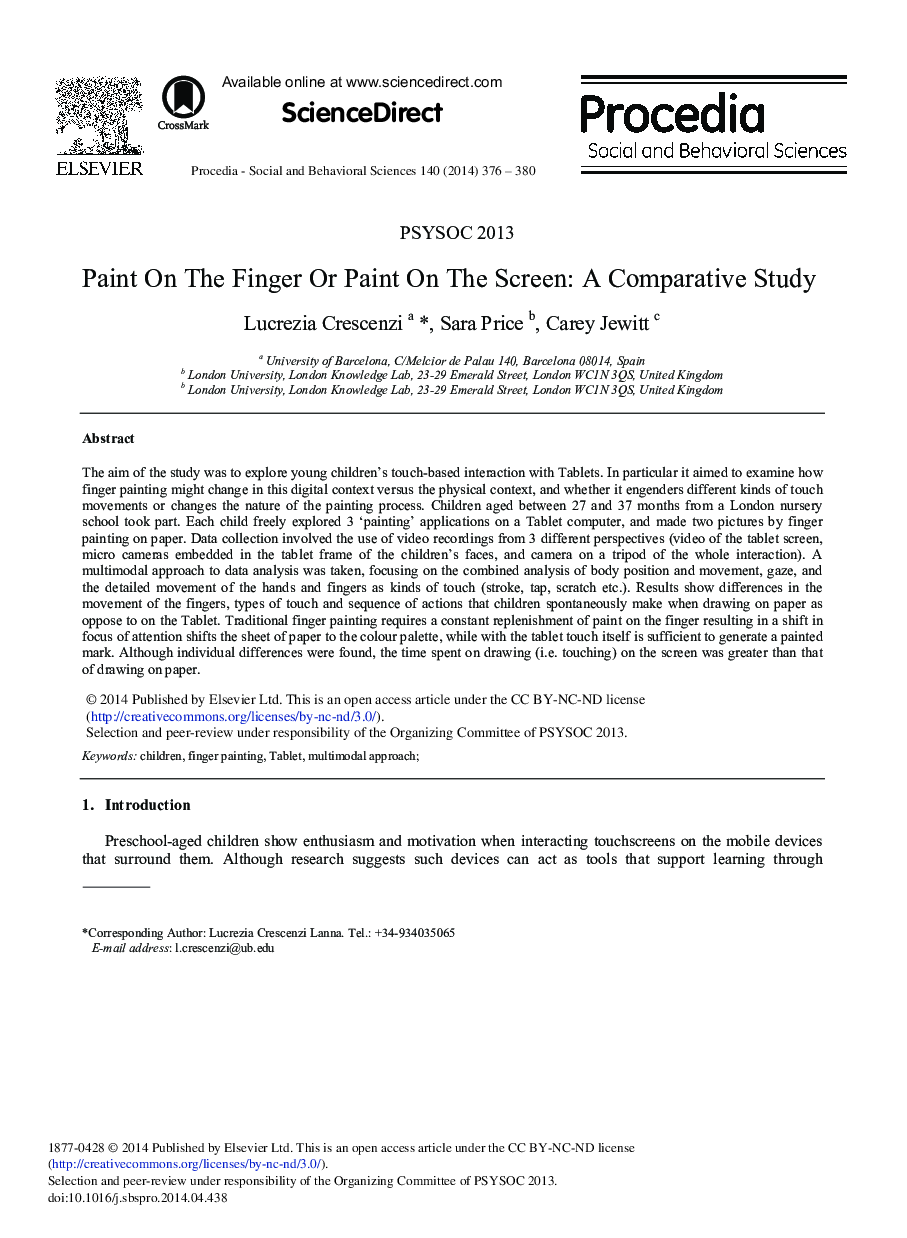| Article ID | Journal | Published Year | Pages | File Type |
|---|---|---|---|---|
| 1112945 | Procedia - Social and Behavioral Sciences | 2014 | 5 Pages |
The aim of the study was to explore young children's touch-based interaction with Tablets. In particular it aimed to examine how finger painting might change in this digital context versus the physical context, and whether it engenders different kinds of touch movements or changes the nature of the painting process. Children aged between 27 and 37 months from a London nursery school took part. Each child freely explored 3 ‘painting’ applications on a Tablet computer, and made two pictures by finger painting on paper. Data collection involved the use of video recordings from 3 different perspectives (video of the tablet screen, micro cameras embedded in the tablet frame of the children's faces, and camera on a tripod of the whole interaction). A multimodal approach to data analysis was taken, focusing on the combined analysis of body position and movement, gaze, and the detailed movement of the hands and fingers as kinds of touch (stroke, tap, scratch etc.). Results show differences in the movement of the fingers, types of touch and sequence of actions that children spontaneously make when drawing on paper as oppose to on the Tablet. Traditional finger painting requires a constant replenishment of paint on the finger resulting in a shift in focus of attention shifts the sheet of paper to the colour palette, while with the tablet touch itself is sufficient to generate a painted mark. Although individual differences were found, the time spent on drawing (i.e. touching) on the screen was greater than that of drawing on paper.
